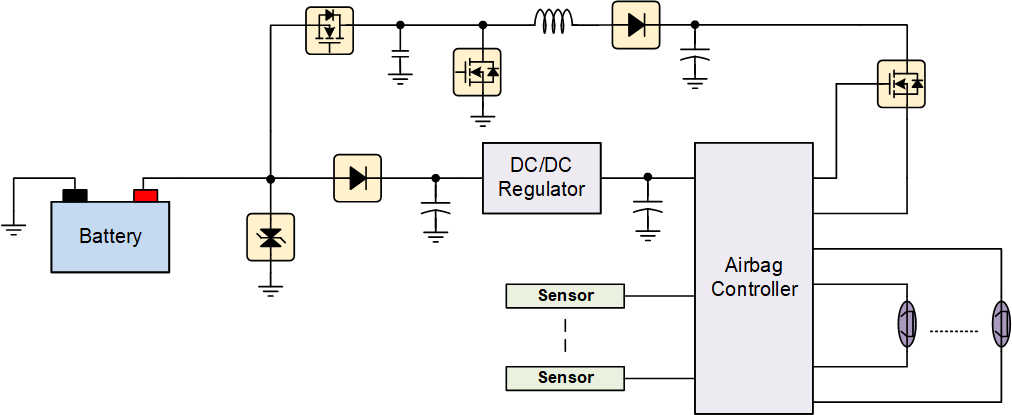
Supplementary Restraint Systems, (SRS), more commonly known as airbag systems, have been a standard feature in vehicles for over 40 years. These have evolved from simple frontal airbags to more comprehensive systems that include side curtain airbags and knee airbags. As a critical component of vehicle safety, the airbag control unit (ACU) plays a pivotal role in determining when to deploy the airbags.
The ACU receives electronic signals from various sensors, including impact sensors and accelerometers, which monitor the vehicle’s speed, acceleration, and other physical parameters. When these parameters exceed predefined thresholds, the ACU initiates the deployment of the airbags by igniting the gas generator within the airbag module.

Impact sensors are categorized into triggering and protective types based on their structure and function. Triggering sensors, which can be electromechanical or mechanical, detect collisions and send signals to the ACU to initiate airbag deployment. Protective sensors, often electronic, work in conjunction with triggering sensors to prevent accidental airbag deployment. They typically use strain gauges or voltage-sensitive devices to measure the force of an impact and determine if it is severe enough to warrant airbag deployment.
The signal transmission between impact sensors, the ACU, and the airbag module must be dependable and precisely timed, especially in the event of a collision. TVS diodes and backup power supplies, typically capacitors, are essential for protecting the system from voltage spikes and ensuring continuous operation.
As vehicles become increasingly electrified, the electrical systems within them become more complex. To protect these systems from voltage transients caused the switching of electrical loads or the impact compromising wiring in the vehicle, TVS diodes are used to clamp overvoltage’s and MOSFETs are used to quickly switch between the main power supply and the backup power supply.

With the advent of electric vehicles, airbag systems have become even more sophisticated. ACUs can now be updated with new software and can utilize cameras to monitor the vehicle’s interior and occupants, allowing for more precise and tailored airbag deployment. As a result, the demand for robust and reliable electronic components, such as those offered by Taiwan Semiconductor, has increased.
Taiwan Semiconductor’s automotive-grade products, including MOSFETs and TVS diodes, comply with the AEC-Q101 standard, are PPAP able and meet the requirements of automotive testing standards such as ISO 7637-2, ISO 10650, and ISO 16750-2. These components play a vital role in ensuring the safety and reliability of modern airbag systems.
Products
Read more articles
- The Role of MOSFETs in Anti-lock Braking Systems (ABS)
- Beyond Braking: Advanced Driver Assistance Systems (ADAS) for a Safer Driving Experience
- Powering the Electric Revolution: The Body Control Module (BCM) in Automotive
- Advanced LED Solutions for Enhanced Vehicle Visibility
- Power Components for On-Board Chargers (OBC): A Comprehensive Overview
- MOSFETs and Diodes: Key Components in Reverse Polarity Protection
- Sensor Fusion for Supplementary Restraint Systems (SRS)


